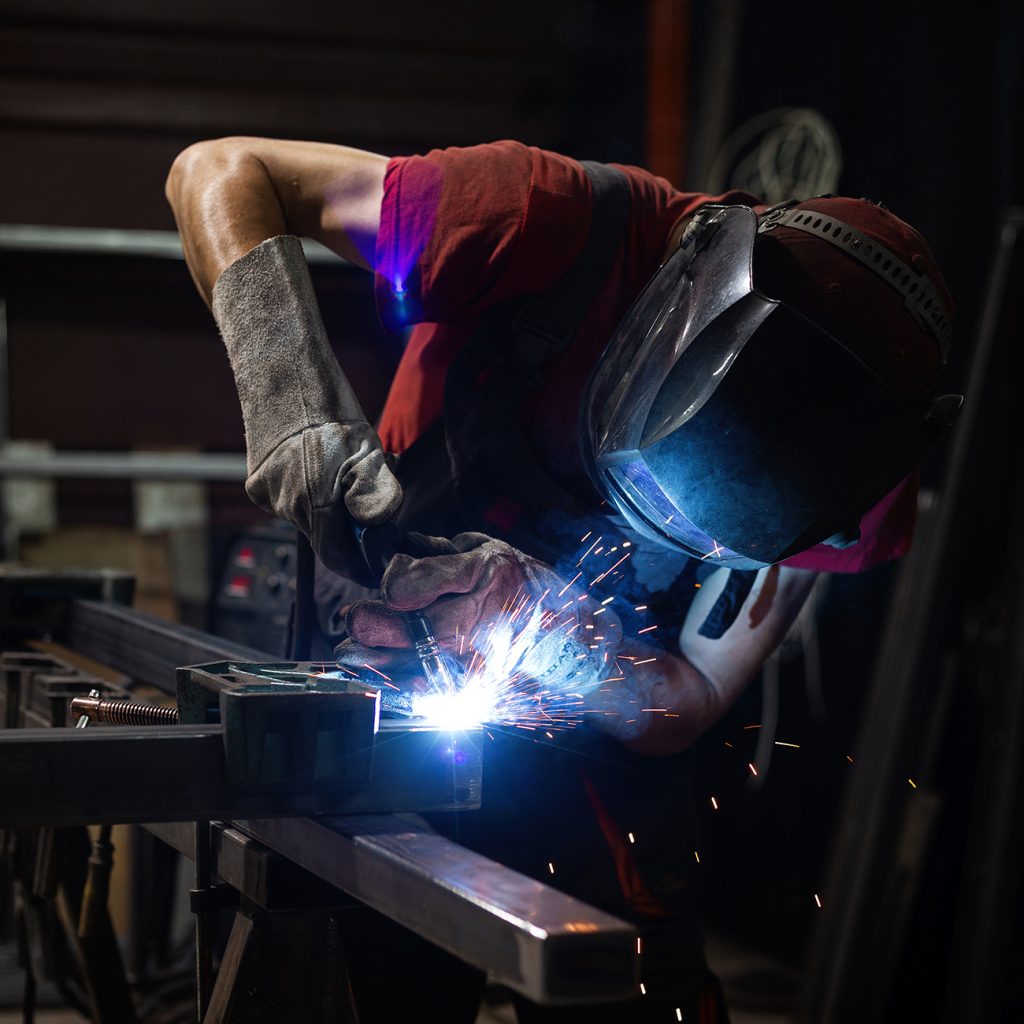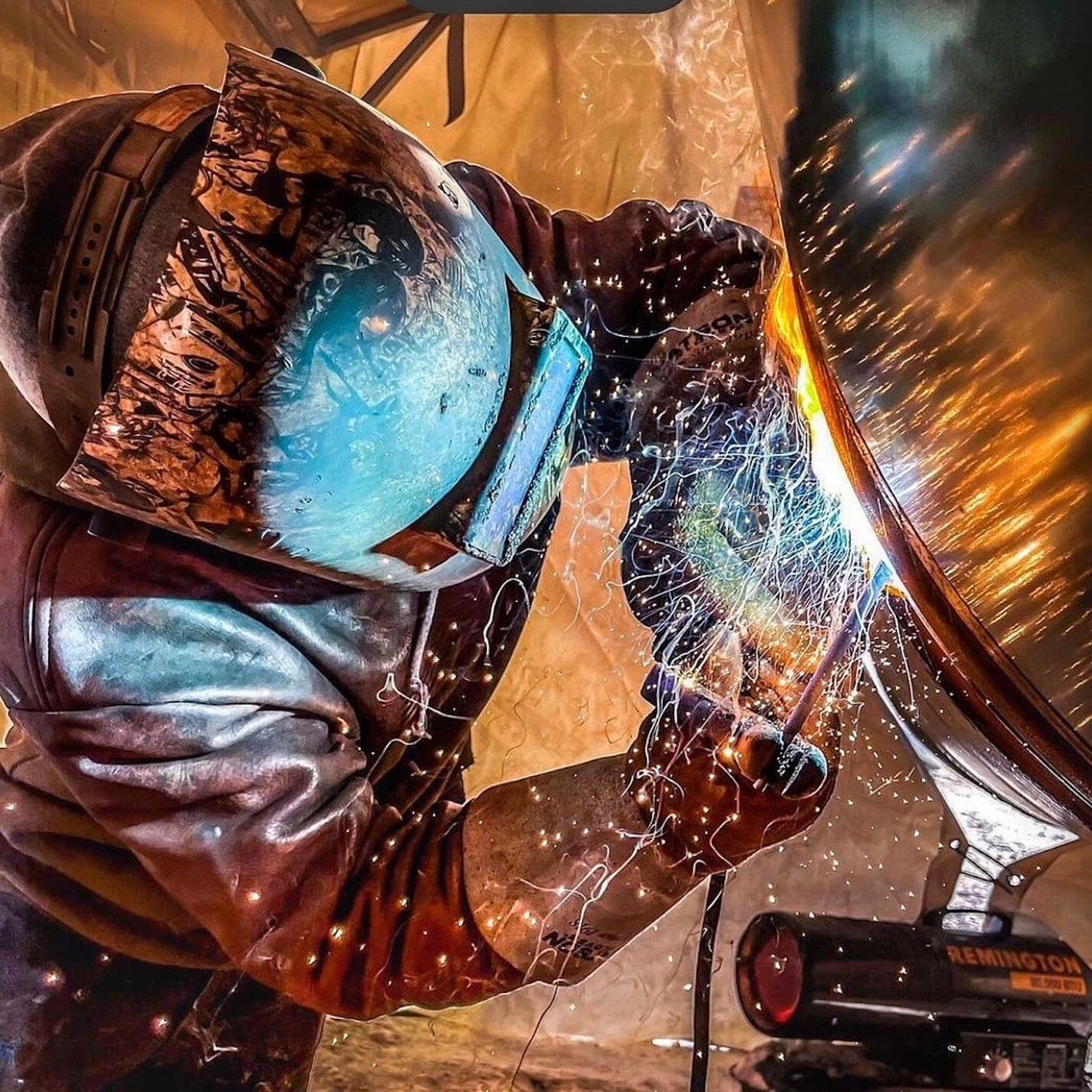Usual Welding Repair Issues and How to Address Them Properly
Welding repairs typically encounter an array of concerns that can endanger the honesty of the final item. Usual issues include inadequate infiltration, porosity, and imbalance, to name a few. Each flaw presents special obstacles that require certain strategies for resolution. Understanding these problems is vital for welders intending to improve their outcomes and abilities. This discussion will explore these usual welding fixing issues and efficient methods to resolve them.
Inadequate Penetration
Poor infiltration happens when the weld metal falls short to fully fuse with the base product, resulting in weak joints and prospective architectural failings. This concern usually stems from insufficient warmth input, inaccurate electrode angle, or inappropriate welding speed. Welders may encounter inadequate infiltration because of a mistake of the needed specifications for a details material thickness or kind. In addition, contamination on the base material's surface area can hinder effective bonding, aggravating the trouble. To deal with inadequate penetration, welders should guarantee ideal settings on their equipment and maintain a clean job surface. Normal evaluation of welds is advised to determine any shortages early, enabling prompt adjustments and the prevention of jeopardized architectural honesty in bonded assemblies.
Porosity
Porosity is a common defect in welded joints that manifests as tiny gas bubbles trapped within the weld steel. This problem can compromise the stability of the weld, causing decreased toughness and possible failing under anxiety. Montana Mobile Welding and Repair Welding. Porosity generally develops from contamination, wetness, or incorrect welding strategies, which enable gases to escape into the liquified weld swimming pool. To attend to porosity, welders ought to guarantee proper surface prep work, maintain a clean working setting, and use ideal welding criteria. Additionally, choosing the right filler material and securing gas can mitigate gas entrapment. Normal inspection and testing of welds can assist recognize porosity early, assuring prompt rehabilitative actions are taken, thereby preserving the high quality and reliability of the bonded framework
Imbalance
Misalignment in welding can emerge from different variables, consisting of improper setup and thermal development. Recognizing the root causes is essential for effective resolution. Several correction techniques are offered to realign elements and ensure architectural stability.
Sources of Imbalance
Welding imbalance often originates from a selection of underlying issues that can compromise architectural stability. One primary cause is improper fit-up of elements before welding, which can lead to spaces and uneven surface areas. Variants in thermal expansion during the welding process can also result in distortion, especially if the products being signed up with have different coefficients of expansion. Additionally, inadequate fixturing and clamping might stop working to hold elements safely in place, leading to activity during welding. Poorly conserved equipment, including welding equipments and tools, may introduce variances in the weld bead, additional adding to imbalance. Operator error, stemming from inadequate training or experience, can also play a considerable function in creating misaligned welds.

Improvement Techniques Readily Available
Resolving imbalance effectively calls for a mix of rehabilitative methods customized to the specific problems at hand. One typical approach is using jigs or components to hold parts in the appropriate placement throughout welding, ensuring consistent alignment. In addition, pre-heating the materials can help in reducing distortion and boost fit-up. For considerable imbalance, mechanical realignment methods, such as utilizing hydraulic jacks or clamps, can be utilized to correct the setting prior to welding. Post-weld heat therapy may additionally be required to soothe tensions triggered by misalignment. Mindful evaluation and modification throughout the setup phase can avoid misalignment problems from becoming substantial problems, advertising a smoother welding procedure and enhancing overall structural integrity.
Distortion
Distortion is an usual challenge in welding that can occur from different aspects, consisting of irregular home heating and air conditioning. Understanding the root causes of distortion is vital for applying efficient prevention methods. Resolving this issue not only improves structural honesty yet also improves the general quality of the weld.
Sources of Distortion
When subjected to the intense warmth of welding, materials frequently undertake changes that can bring about distortion. This sensation primarily occurs from thermal development and contraction during the welding process. As the weld area heats up, the product broadens; upon cooling, it gets, which can create internal anxieties. Furthermore, irregular home heating throughout a workpiece can aggravate these stresses, causing warping or bending. The sort of product likewise plays a considerable role; steels with varying thermal conductivity and coefficients of expansion may respond in different ways, leading to unforeseeable distortions. Bad joint style and insufficient fixturing can contribute to misalignment throughout welding, increasing the probability of distortion. Understanding these reasons is necessary for effective welding repair work and avoidance techniques.
Avoidance Techniques
Efficient prevention techniques for distortion during welding concentrate on regulating warm input and making sure correct joint design. Maintaining a consistent heat input assists to decrease thermal expansion and tightening, which can bring about distortion. Using methods such as preheating the workpiece can also decrease the temperature level gradient, promoting uniform heating. Furthermore, selecting suitable joint layouts, such as T-joints or lap joints, can boost security and reduce stress focus. Applying appropriate fixturing to secure the workpieces in area further aids in maintaining placement throughout the welding procedure. Lastly, staggered welding series can distribute warmth more equally, preventing local distortion. By using these techniques, welders can substantially reduce the probability of distortion and improve the overall quality of their welds.
Fracturing
Splitting is an usual issue come across in welding repair work, frequently arising from various factors such as inappropriate read here cooling rates, product option, or insufficient joint preparation. The occurrence of splits can considerably endanger the integrity of the weld, bring about potential failures throughout operation. To resolve this concern, welders need to initially analyze the root creates, ensuring that products work and suitably picked for the particular application. Additionally, managing the air conditioning price during the welding process is essential; quick cooling can generate tension and cause splitting. Proper joint design and preparation also add to minimizing the danger. Applying these approaches can boost weld high quality and sturdiness, inevitably reducing the possibility of fracturing in completed weldments.

Insufficient Blend
A substantial issue in welding repair services is insufficient fusion, which happens when the weld metal does not sufficiently bond with the base material or previous weld passes - Belgrade Fabrication. This flaw can cause weaknesses in the joint, potentially compromising the honesty of the welded framework. Aspects adding to incomplete combination consist of insufficient warmth input, inappropriate welding strategy, and contamination of the surfaces being signed up with. To address this issue effectively, welders should assure appropriate pre-weld cleaning and surface preparation, in addition to adjust their welding specifications to accomplish appropriate penetration and blend. Routine inspection during the welding procedure can likewise aid determine incomplete combination early, permitting for timely restorative actions to improve the overall top quality of the weld
Overheating
While welding fixings can boost architectural integrity, overheating offers a considerable obstacle that can result in material destruction. Too much warm throughout welding can alter the mechanical properties check here of metals, leading to lowered stamina, increased brittleness, and bending. This phenomenon is specifically essential in high-stress applications where structural reliability is vital. Determining overheating can entail aesthetic inspections for discoloration or distortion, in addition to keeping an eye on temperature level during the welding procedure. To alleviate the dangers related to getting too hot, welders need to employ appropriate strategies, such as regulating warmth input, adjusting travel rate, and making use of suitable filler materials. Furthermore, carrying out pre- and post-weld warmth treatments can aid bring back material residential or commercial properties and improve the general top quality of the repair service, ensuring lasting efficiency and security.
Often Asked Inquiries
What Are the Common Signs of a Welding Problem?

How Can I Examine My Welds for Quality?
To evaluate welds for quality, one can utilize visual evaluations, ultrasonic testing, and radiographic methods. Each technique ensures structural stability, recognizes problems, and verifies adherence to defined standards, inevitably boosting the dependability of the bonded joints.
What Safety Precautions Should I Take While Welding?
When welding, one need to prioritize safety by wearing ideal individual protective devices, ensuring correct ventilation, protecting combustible materials away, maintaining a clean workspace, and understanding environments to avoid mishaps and injuries.
Can I Fix a Weld Without Remodeling the Entire Joint?
Repairing a weld without redoing the whole joint is feasible, relying on the damage (Montana Mobile Welding and Repair Belgrade). Strategies such as grinding, including filler product, or utilizing a welding process can successfully attend to specific imperfections while protecting the bordering framework
What Tools Are Important for Efficient Welding Repair Works?
Crucial devices for effective welding repairs include a welding equipment, cord brush, mill, protective gear, clamps, and filler products. Each device plays an important duty in guaranteeing high quality and safety and security throughout the fixing process. Porosity usually develops from contamination, dampness, More Help or improper welding techniques, which enable gases to get away right into the liquified weld pool. Badly conserved devices, consisting of welding machines and devices, might present disparities in the weld bead, further adding to misalignment. When subjected to the intense warmth of welding, products often go through changes that can lead to distortion. Splitting is a typical problem run into in welding repairs, usually resulting from numerous elements such as inappropriate cooling prices, material option, or poor joint preparation. A substantial concern in welding repairs is incomplete combination, which happens when the weld steel does not properly bond with the base material or previous weld passes.